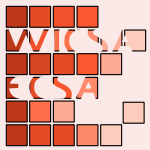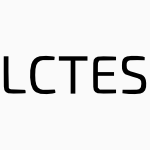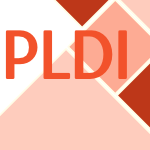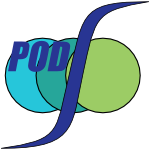55 papers:
 SIGMOD-2015-ZhangYQS #performance
SIGMOD-2015-ZhangYQS #performance- Divide & Conquer: I/O Efficient Depth-First Search (ZZ, JXY, LQ, ZS), pp. 445–458.
 VLDB-2015-PapenbrockKQN #dependence
VLDB-2015-PapenbrockKQN #dependence- Divide & Conquer-based Inclusion Dependency Discovery (TP, SK, JAQR, FN), pp. 774–785.
 DUXU-UI-2015-LimW #challenge #gender
DUXU-UI-2015-LimW #challenge #gender- Closing the Gender Divide in Tech: Challenges and Achievements in Vogue (LL, Y(W), pp. 224–231.
 LCT-2015-LorenzBK #case study
LCT-2015-LorenzBK #case study- Impacting the Digital Divide on a Global Scale — Six Case Studies from Three Continents (BL, SIB, KK), pp. 687–696.
 ICML-2015-YangX15b #clustering #distributed #divide and conquer #framework #graph
ICML-2015-YangX15b #clustering #distributed #divide and conquer #framework #graph- A Divide and Conquer Framework for Distributed Graph Clustering (WY, HX), pp. 504–513.
 POPL-2015-Buneman #database #programming #question
POPL-2015-Buneman #database #programming #question- Databases and Programming: Two Subjects Divided by a Common Language? (PB), p. 487.
 CASE-2014-ZhaoUH #divide and conquer #flexibility #synthesis
CASE-2014-ZhaoUH #divide and conquer #flexibility #synthesis- A divide-and-conquer method for the synthesis of non-blocking supervisors for flexible manufacturing systems (MZ, MU, YH), pp. 455–460.
 ICML-c1-2014-HsiehSD #divide and conquer #kernel
ICML-c1-2014-HsiehSD #divide and conquer #kernel- A Divide-and-Conquer Solver for Kernel Support Vector Machines (CJH, SS, ISD), pp. 566–574.
 IFM-2013-Song00LD #analysis #divide and conquer #reachability
IFM-2013-Song00LD #analysis #divide and conquer #reachability- Improved Reachability Analysis in DTMC via Divide and Conquer (SS, LG, JS, YL, JSD), pp. 162–176.
 ICFP-2013-BernardyC #context-free grammar #divide and conquer #parsing #performance
ICFP-2013-BernardyC #context-free grammar #divide and conquer #parsing #performance- Efficient divide-and-conquer parsing of practical context-free languages (JPB, KC), pp. 111–122.
 WICSA-ECSA-2012-PoortKWV #non-functional #requirements
WICSA-ECSA-2012-PoortKWV #non-functional #requirements- Issues Dealing with Non-Functional Requirements across the Contractual Divide (ERP, AK, PHNdW, HvV), pp. 315–319.
 DATE-2012-AnagnostopoulosBKS #distributed #divide and conquer #manycore #runtime
DATE-2012-AnagnostopoulosBKS #distributed #divide and conquer #manycore #runtime- A divide and conquer based distributed run-time mapping methodology for many-core platforms (IA, AB, GK, DS), pp. 111–116.
 CSMR-2012-YoshidaKI #approach #functional #maintenance #metric #source code
CSMR-2012-YoshidaKI #approach #functional #maintenance #metric #source code- A Cohesion Metric Approach to Dividing Source Code into Functional Segments to Improve Maintainability (NY, MK, HI), pp. 365–370.
 HILT-2012-Taft #divide and conquer #manycore #named #programming #tutorial #using
HILT-2012-Taft #divide and conquer #manycore #named #programming #tutorial #using- Tutorial: multicore programming using divide-and-conquer and work stealing (STT), pp. 13–14.
 KDD-2012-Jordan #big data #divide and conquer #statistics
KDD-2012-Jordan #big data #divide and conquer #statistics- Divide-and-conquer and statistical inference for big data (MIJ), p. 4.
 ICSE-2012-Shang #developer #using
ICSE-2012-Shang #developer #using- Bridging the divide between software developers and operators using logs (WS), pp. 1583–1586.
 LCTES-2011-BenvenisteBCP #compilation #hybrid
LCTES-2011-BenvenisteBCP #compilation #hybrid- Divide and recycle: types and compilation for a hybrid synchronous language (AB, TB, BC, MP), pp. 61–70.
 PLDI-2010-SartorBFHM #array #flexibility #named
PLDI-2010-SartorBFHM #array #flexibility #named- Z-rays: divide arrays and conquer speed and flexibility (JBS, SMB, DF, MH, KSM), pp. 471–482.
 CHI-2010-IqbalJH
CHI-2010-IqbalJH- Cars, calls, and cognition: investigating driving and divided attention (STI, YCJ, EH), pp. 1281–1290.
 SIGMOD-2009-ChaudhuriNS #profiling #static analysis #using
SIGMOD-2009-ChaudhuriNS #profiling #static analysis #using- Bridging the application and DBMS divide using static analysis and dynamic profiling (SC, VRN, MS), pp. 1039–1042.
 IDGD-2009-ChenWSWL
IDGD-2009-ChenWSWL- The Application of ICTs and Digital Divide in Rural China (PC, JW, ZS, JW, YL), pp. 347–355.
 CIKM-2009-ZhuCWZWC #divide and conquer #learning #query #ranking
CIKM-2009-ZhuCWZWC #divide and conquer #learning #query #ranking- To divide and conquer search ranking by learning query difficulty (ZAZ, WC, TW, CZ, GW, ZC), pp. 1883–1886.
 POPL-2009-MorihataMHT #divide and conquer #morphism #theorem
POPL-2009-MorihataMHT #divide and conquer #morphism #theorem- The third homomorphism theorem on trees: downward & upward lead to divide-and-conquer (AM, KM, ZH, MT), pp. 177–185.
 CHI-2008-WycheAG
CHI-2008-WycheAG- Re-placing faith: reconsidering the secular-religious use divide in the United States and Kenya (SW, PMA, REG), pp. 11–20.
 SAC-2008-SeifertWK #algorithm #detection #divide and conquer #interactive #paradigm
SAC-2008-SeifertWK #algorithm #detection #divide and conquer #interactive #paradigm- Application of divide-and-conquer algorithm paradigm to improve the detection speed of high interaction client honeypots (CS, IW, PK), pp. 1426–1432.
 VLDB-2007-ChaudhuriNS #database #developer #profiling
VLDB-2007-ChaudhuriNS #database #developer #profiling- Bridging the Application and DBMS Profiling Divide for Database Application Developers (SC, VRN, MS), pp. 1252–1262.
 PLDI-2007-MoritaMMHT #automation #divide and conquer #parallel #source code
PLDI-2007-MoritaMMHT #automation #divide and conquer #parallel #source code- Automatic inversion generates divide-and-conquer parallel programs (KM, AM, KM, ZH, MT), pp. 146–155.
 HCI-MIE-2007-ReiterJ #quality #requirements
HCI-MIE-2007-ReiterJ #quality #requirements- Watch, Press, and Catch — Impact of Divided Attention on Requirements of Audiovisual Quality (UR, SJP), pp. 943–952.
 SIGIR-2007-LalmasBFFJ #community #comprehension #information management
SIGIR-2007-LalmasBFFJ #community #comprehension #information management- Bridging the digital divide: understanding information access practices in an indian village community (ML, RB, MF, DMF, MJ), pp. 741–742.
 PODS-2005-ChengVKW #clustering
PODS-2005-ChengVKW #clustering- A divide-and-merge methodology for clustering (DC, SV, RK, GW), pp. 196–205.
 CIKM-2005-Polyzotis #clustering #effectiveness #optimisation #paradigm #query
CIKM-2005-Polyzotis #clustering #effectiveness #optimisation #paradigm #query- Selectivity-based partitioning: a divide-and-union paradigm for effective query optimization (NP), pp. 720–727.
 DAC-2004-YangKM #architecture #named #optimisation
DAC-2004-YangKM #architecture #named #optimisation- Divide-and-concatenate: an architecture level optimization technique for universal hash functions (BY, RK, DAM), pp. 614–617.
 ICPR-v1-2004-VirmajokiF #algorithm #clustering #divide and conquer #graph
ICPR-v1-2004-VirmajokiF #algorithm #clustering #divide and conquer #graph- Divide-and-Conquer Algorithm for Creating Neighborhood Graph for Clustering (OV, PF), pp. 264–267.
 KDD-2003-AliK #clustering #divide and conquer #using #web
KDD-2003-AliK #clustering #divide and conquer #using #web- Golden Path Analyzer: using divide-and-conquer to cluster Web clickstreams (KA, SPK), pp. 349–358.
 DATE-2002-DrozdLD #array #float #online #performance #testing
DATE-2002-DrozdLD #array #float #online #performance #testing- Efficient On-Line Testing Method for a Floating-Point Iterative Array Divider (AVD, MVL, JVD), p. 1127.
 SAC-2002-Huang #divide and conquer #parallel #theory and practice
SAC-2002-Huang #divide and conquer #parallel #theory and practice- Grid-enabled parallel divide-and-conquer: theory and practice (CHH), pp. 865–869.
 PPoPP-2001-NieuwpoortKB #divide and conquer #performance
PPoPP-2001-NieuwpoortKB #divide and conquer #performance- Efficient load balancing for wide-area divide-and-conquer applications (RvN, TK, HEB), pp. 34–43.
 CAV-2001-MoondanosSHK #divide and conquer #equivalence #logic #named #verification
CAV-2001-MoondanosSHK #divide and conquer #equivalence #logic #named #verification- CLEVER: Divide and Conquer Combinational Logic Equivalence VERification with False Negative Elimination (JM, CJHS, ZH, DK), pp. 131–143.
 ICML-2000-ChownD #approach #divide and conquer #information management #learning
ICML-2000-ChownD #approach #divide and conquer #information management #learning- A Divide and Conquer Approach to Learning from Prior Knowledge (EC, TGD), pp. 143–150.
 PPoPP-1999-RuginaR #algorithm #automation #divide and conquer #parallel
PPoPP-1999-RuginaR #algorithm #automation #divide and conquer #parallel- Automatic Parallelization of Divide and Conquer Algorithms (RR, MCR), pp. 72–83.
 DATE-1998-RuttenBEK #algorithm #divide and conquer #logic #performance
DATE-1998-RuttenBEK #algorithm #divide and conquer #logic #performance- An Efficient Divide and Conquer Algorithm for Exact Hazard Free Logic Minimization (JWJMR, MRCMB, CAJvE, MAJK), pp. 749–754.
 ICALP-1997-Roura #divide and conquer #theorem
ICALP-1997-Roura #divide and conquer #theorem- An Improved Master Theorem for Divide-and-Conquer Recurrences (SR), pp. 449–459.
 PLILP-1997-HerrmannL #parallel
PLILP-1997-HerrmannL #parallel- Transformation of Divide & Conquer to Nested Parallel Loops (CAH, CL), pp. 95–109.
 DAC-1996-Bryant #analysis
DAC-1996-Bryant #analysis- Bit-Level Analysis of an SRT Divider Circuit (REB), pp. 661–665.
 PLILP-1996-Gorlatch #divide and conquer #implementation #parallel
PLILP-1996-Gorlatch #divide and conquer #implementation #parallel- Systematic Extraction and Implementation of Divide-and-Conquer Parallelism (SG), pp. 274–288.
 CHI-1995-HarrisonIVB #design #evaluation #user interface
CHI-1995-HarrisonIVB #design #evaluation #user interface- Transparent Layered User Interfaces: An Evaluation of a Display Design to Enhance Focused and Divided Attention (BLH, HI, KJV, WB), pp. 317–324.
 CAV-1995-Bryant #multi #verification
CAV-1995-Bryant #multi #verification- Multipliers and Dividers: Insights on Arithmetic Circuits Verification (Extended Abstract) (REB), pp. 1–3.
 EDAC-1994-NicolaidisB #array #implementation #multi #performance #self
EDAC-1994-NicolaidisB #array #implementation #multi #performance #self- Efficient Implementations of Self-Checking Multiply and Divide Arrays (MN, HB), pp. 574–579.
 ICDAR-1993-LeeDKA #case study #functional
ICDAR-1993-LeeDKA #case study #functional- A study on a method of dividing machine-parts into functional groups for technical illustrations (IL, SD, TK, NA), pp. 886–889.
 ICALP-1993-FlajoletG #divide and conquer
ICALP-1993-FlajoletG #divide and conquer- Exact Asymptotics of Divide-and-Conquer Recurrences (PF, MJG), pp. 137–149.
 ICML-1993-JordanJ #approach #divide and conquer #learning #statistics
ICML-1993-JordanJ #approach #divide and conquer #learning #statistics- Supervised Learning and Divide-and-Conquer: A Statistical Approach (MIJ, RAJ), pp. 159–166.
 STOC-1991-Matousek #approximate #divide and conquer #geometry
STOC-1991-Matousek #approximate #divide and conquer #geometry- Approximations and Optimal Geometric Divide-And-Conquer (JM), pp. 505–511.
 SLP-1984-Nakagawa84 #parallel #prolog #set
SLP-1984-Nakagawa84 #parallel #prolog #set- AND Parallel PROLOG with Divided Assertion Set (HN), pp. 22–28.
 LISP-1980-Keller #multi
LISP-1980-Keller #multi- Divide and CONCer: Data Structuring in Applicative Multiprocessing Systems (RMK), pp. 196–202.
 STOC-1976-BentleyS #divide and conquer #multi
STOC-1976-BentleyS #divide and conquer #multi- Divide-and-Conquer in Multidimensional Space (JLB, MIS), pp. 220–230.
 SIGMOD-2015-ZhangYQS #performance
SIGMOD-2015-ZhangYQS #performance VLDB-2015-PapenbrockKQN #dependence
VLDB-2015-PapenbrockKQN #dependence DUXU-UI-2015-LimW #challenge #gender
DUXU-UI-2015-LimW #challenge #gender LCT-2015-LorenzBK #case study
LCT-2015-LorenzBK #case study ICML-2015-YangX15b #clustering #distributed #divide and conquer #framework #graph
ICML-2015-YangX15b #clustering #distributed #divide and conquer #framework #graph POPL-2015-Buneman #database #programming #question
POPL-2015-Buneman #database #programming #question CASE-2014-ZhaoUH #divide and conquer #flexibility #synthesis
CASE-2014-ZhaoUH #divide and conquer #flexibility #synthesis ICML-c1-2014-HsiehSD #divide and conquer #kernel
ICML-c1-2014-HsiehSD #divide and conquer #kernel IFM-2013-Song00LD #analysis #divide and conquer #reachability
IFM-2013-Song00LD #analysis #divide and conquer #reachability ICFP-2013-BernardyC #context-free grammar #divide and conquer #parsing #performance
ICFP-2013-BernardyC #context-free grammar #divide and conquer #parsing #performance WICSA-ECSA-2012-PoortKWV #non-functional #requirements
WICSA-ECSA-2012-PoortKWV #non-functional #requirements DATE-2012-AnagnostopoulosBKS #distributed #divide and conquer #manycore #runtime
DATE-2012-AnagnostopoulosBKS #distributed #divide and conquer #manycore #runtime CSMR-2012-YoshidaKI #approach #functional #maintenance #metric #source code
CSMR-2012-YoshidaKI #approach #functional #maintenance #metric #source code HILT-2012-Taft #divide and conquer #manycore #named #programming #tutorial #using
HILT-2012-Taft #divide and conquer #manycore #named #programming #tutorial #using KDD-2012-Jordan #big data #divide and conquer #statistics
KDD-2012-Jordan #big data #divide and conquer #statistics ICSE-2012-Shang #developer #using
ICSE-2012-Shang #developer #using LCTES-2011-BenvenisteBCP #compilation #hybrid
LCTES-2011-BenvenisteBCP #compilation #hybrid PLDI-2010-SartorBFHM #array #flexibility #named
PLDI-2010-SartorBFHM #array #flexibility #named CHI-2010-IqbalJH
CHI-2010-IqbalJH SIGMOD-2009-ChaudhuriNS #profiling #static analysis #using
SIGMOD-2009-ChaudhuriNS #profiling #static analysis #using IDGD-2009-ChenWSWL
IDGD-2009-ChenWSWL CIKM-2009-ZhuCWZWC #divide and conquer #learning #query #ranking
CIKM-2009-ZhuCWZWC #divide and conquer #learning #query #ranking POPL-2009-MorihataMHT #divide and conquer #morphism #theorem
POPL-2009-MorihataMHT #divide and conquer #morphism #theorem CHI-2008-WycheAG
CHI-2008-WycheAG SAC-2008-SeifertWK #algorithm #detection #divide and conquer #interactive #paradigm
SAC-2008-SeifertWK #algorithm #detection #divide and conquer #interactive #paradigm VLDB-2007-ChaudhuriNS #database #developer #profiling
VLDB-2007-ChaudhuriNS #database #developer #profiling PLDI-2007-MoritaMMHT #automation #divide and conquer #parallel #source code
PLDI-2007-MoritaMMHT #automation #divide and conquer #parallel #source code HCI-MIE-2007-ReiterJ #quality #requirements
HCI-MIE-2007-ReiterJ #quality #requirements SIGIR-2007-LalmasBFFJ #community #comprehension #information management
SIGIR-2007-LalmasBFFJ #community #comprehension #information management PODS-2005-ChengVKW #clustering
PODS-2005-ChengVKW #clustering CIKM-2005-Polyzotis #clustering #effectiveness #optimisation #paradigm #query
CIKM-2005-Polyzotis #clustering #effectiveness #optimisation #paradigm #query DAC-2004-YangKM #architecture #named #optimisation
DAC-2004-YangKM #architecture #named #optimisation ICPR-v1-2004-VirmajokiF #algorithm #clustering #divide and conquer #graph
ICPR-v1-2004-VirmajokiF #algorithm #clustering #divide and conquer #graph KDD-2003-AliK #clustering #divide and conquer #using #web
KDD-2003-AliK #clustering #divide and conquer #using #web DATE-2002-DrozdLD #array #float #online #performance #testing
DATE-2002-DrozdLD #array #float #online #performance #testing SAC-2002-Huang #divide and conquer #parallel #theory and practice
SAC-2002-Huang #divide and conquer #parallel #theory and practice PPoPP-2001-NieuwpoortKB #divide and conquer #performance
PPoPP-2001-NieuwpoortKB #divide and conquer #performance CAV-2001-MoondanosSHK #divide and conquer #equivalence #logic #named #verification
CAV-2001-MoondanosSHK #divide and conquer #equivalence #logic #named #verification ICML-2000-ChownD #approach #divide and conquer #information management #learning
ICML-2000-ChownD #approach #divide and conquer #information management #learning PPoPP-1999-RuginaR #algorithm #automation #divide and conquer #parallel
PPoPP-1999-RuginaR #algorithm #automation #divide and conquer #parallel DATE-1998-RuttenBEK #algorithm #divide and conquer #logic #performance
DATE-1998-RuttenBEK #algorithm #divide and conquer #logic #performance ICALP-1997-Roura #divide and conquer #theorem
ICALP-1997-Roura #divide and conquer #theorem PLILP-1997-HerrmannL #parallel
PLILP-1997-HerrmannL #parallel DAC-1996-Bryant #analysis
DAC-1996-Bryant #analysis PLILP-1996-Gorlatch #divide and conquer #implementation #parallel
PLILP-1996-Gorlatch #divide and conquer #implementation #parallel CHI-1995-HarrisonIVB #design #evaluation #user interface
CHI-1995-HarrisonIVB #design #evaluation #user interface CAV-1995-Bryant #multi #verification
CAV-1995-Bryant #multi #verification EDAC-1994-NicolaidisB #array #implementation #multi #performance #self
EDAC-1994-NicolaidisB #array #implementation #multi #performance #self ICDAR-1993-LeeDKA #case study #functional
ICDAR-1993-LeeDKA #case study #functional ICALP-1993-FlajoletG #divide and conquer
ICALP-1993-FlajoletG #divide and conquer ICML-1993-JordanJ #approach #divide and conquer #learning #statistics
ICML-1993-JordanJ #approach #divide and conquer #learning #statistics STOC-1991-Matousek #approximate #divide and conquer #geometry
STOC-1991-Matousek #approximate #divide and conquer #geometry SLP-1984-Nakagawa84 #parallel #prolog #set
SLP-1984-Nakagawa84 #parallel #prolog #set LISP-1980-Keller #multi
LISP-1980-Keller #multi STOC-1976-BentleyS #divide and conquer #multi
STOC-1976-BentleyS #divide and conquer #multi









